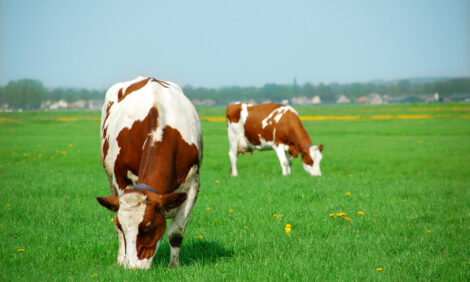



University Offers New Advice on Fly Control
MISSOURI, US - Flies cost the cattle industry more than $500 million each year, causing slowed weight gain, reduced milk production and diseases such as pinkeye and anaplasmosis. Effective fly control may require combined use of products, said a University of Missouri Extension livestock specialist.The recommended economic threshold for a pesticide program is 200 flies per animal, said David Hoffman.
Face and horn flies are the two most common types that attack cattle, said Hoffman said. Face flies spread bacteria that cause pinkeye, reducing average weight gain in calves by 17 pounds when one eye is infected and 30 pounds to 65 pounds when both eyes are infected. Because these insects spend little time on the animal, they are difficult to control with pesticides.
Horn flies feed up to 30 times per day, primarily on the back and shoulders of cattle. The pest spends its entire life cycle on the animal, leaving only to lay eggs in fresh manure.
Insecticide application methods for controlling flies include ear tags, sprayers, back rubbers, dust bags and pour-on and oral application.
Organophosphate tags effectively control horn flies but are less effective with face flies. Horn flies can become resistant to pyrethroid ear tags, so Hoffman recommends alternating the two types each year. Remove ear tags at the end of the season to prevent pesticide resistance in flies through constant exposure to sublethal doses.
Regardless of the method used, timing is critical to the effectiveness of a fly control program.
If you place ear tags too early, pesticide strength can diminish before peak fly season. Pour-on liquids and sprays provide immediate control but reapplication is typically necessary every 30 days throughout the fly season. Back rubbers and dust bags can be effective when placed where cattle will come into contact with them, such as near mineral feeders and watering areas.
Start use of oral larvacides in the spring, Hoffman said. However, if your neighbor is not using a similar control method, flies may cross the fence and cause problems in your herd.
TheCattleSite News Desk


